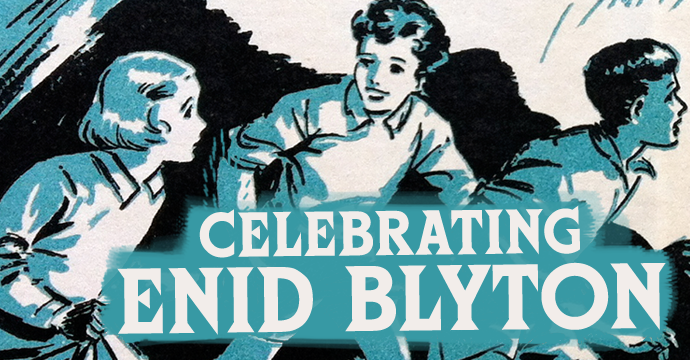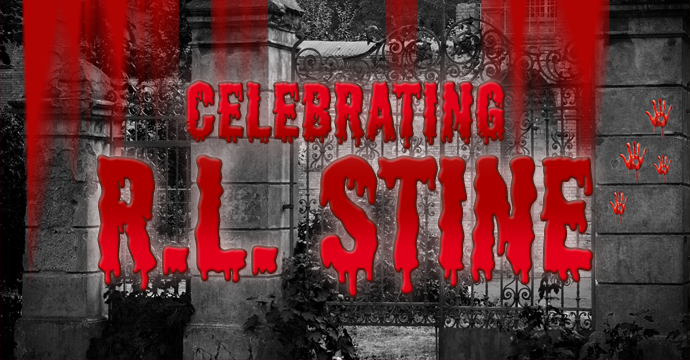Our author of the week this week is Roald Dahl. We’ve all experienced some of the “Dahl Magic” throughout our lives, whether that’s from reading his books, or seeing TV and film adaptations of them (think Johnny Depp as Willy Wonka, and George Clooney as Fantastic Mr. Fox). So it is with massive affection that World of Books looks back at this charismatic and talented author’s life.
“I have a passion for teaching kids to become readers, to become comfortable with a book, not daunted. Books shouldn’t be daunting, they should be funny, exciting and wonderful; and learning to be a reader gives a terrific advantage.”
― Roald Dahl
Named after an explorer called Roald Amundsen who was the national hero of Norway at the time, Roald Dahl was born 13th September 1916 in a village called Villa Marie, in Llandaff, Cardiff (basically in Wales!) His parents, Harald and Sofie Magdalene Dahl, were Norwegian – Harald Dahl had emigrated to Wales from Norway in the 1880s, and Sofie Dahl travelled from Norway to marry him in 1911. This meant that Roald grew up speaking Norwegian as well as English. He also spent most school holidays with his Mother’s family in Norway – an influence that can be seen in ‘The Witches’ where the main character is a little boy who’s grandmother still lives in Norway. Dahl had two sisters, Astri and Alfhild. However, tragedy struck when Dahl was three – Astri died of appendicitis. Worse still the family suffered further loss weeks later when his father died of pneumonia whilst on a fishing trip in the Antarctic. He was just 57 years old.
Dahl’s father had been set on his children attending British schools, feeling that they offered the best education in the world. So Dahl’s first school was The Cathedral School in Llandaff, and later he attended boarding school Saint Peter’s in Weston-super-Mare. Whilst there he suffered from homesickness, so wrote to his mother each week (letters he found she’d saved after her death in 1967) – check out ‘Boy: Tales of Childhood’ for an autobiographical account of his time there. In 1929 he began to attend Repton School in Derbyshire. This school was close to the Cadbury factory, and the pupils were often asked to test chocolate products. As can imagined Dahl became a huge fan of chocolate (well, let’s face it, who isn’t?). It is thought it is from these years that the idea for his book ‘Charlie and the Chocolate Factory’ (1964) stemmed.
Throughout his school years, Dahl wasn’t seen as a particularly gifted pupil, often reducing his teachers to exasperation over his work. He was very tall, excelled at sports, enjoyed photography, and was passionate about all things literature (his favourite authors ranging from Rudyard Kipling to Charles Dickens). After he finished at school, Dahl hiked through Newfoundland with the Public Schools’ Exploring Society. He then joined the Shell Petroleum Company in 1934 and had two years of training. After this he worked out in Africa where he carried out assignments to supply oil to customers.
When World War II began in 1939, Dahl became an officer in the King’s African Rifles and commanded a platoon of indigenous troops called Askaris. Later that same year he joined the Royal Air Force and, after flying several solo flights, he was promoted the next year to Acting Pilot Officer. Soon after, on a long flight plan (which turned out to have been the wrong instructions in the first place), Dahl’s plane ran low on fuel and he had to make an emergency landing in a desert. His nose was smashed in the crash and he was temporarily blinded, but managed to escape the flaming wreckage (check out ‘Going Solo’ for more on this). After being rescued, he went on to make a full recovery and take up his place once more in the Air Force. After several months of serving in Egypt, he began to suffer from severe headaches so was sent home as an invalid. During these years, Dahl also supplied intelligence from Washington to the organization known as the British Security Coordination (part of MI6).
After all this, it was only in 1942 that Dahl began to write – his first published work, ‘Shot Down Over Libya’ being featured in ‘The Saturday Evening Post’. He is now regarded as one of the World’s best-selling fiction authors, with his book sales estimated at being worth over £100 million and his works being published in 50 languages.
Dahl’s first children’s book was called ‘The Gremlins’ (1943) which, according to RAF folklore, was what all the RAF pilots called the naughty creatures who caused problems with their planes. This book was so popular that the Eleanor Roosevelt herself read it to her grandchildren, and Walt Disney commissioned a film of it (although this never ended up being made). His other children’s books, and the characters in them, are well-known and loved – whether this is the friendly giant in ‘The BFG’ (1982), or the clever and loving Mr. Hoppy in ‘Esio Trot’ (1990).
As well as writing for children, it’s less well-known that Dahl also wrote for adults, writing over 60 short stories throughout his life. His style can be described as macabre, and full of dark humour, often with a surprise ending. He received three Edgar Awards from The Mystery Writers of America throughout his career, and his work often found their way into anthropologies which helped him gain global acclaim.
In terms of his home life, Dahl married Patricia Neal (an American actress) in 1953. Their marriage lasted for 30 years and they had five children: Olivia, Tessa, Theo, Ophelia and Lucy.
The family could not be considered a lucky one – when Theo was just four months old his buggy was hit by a taxicab in New York and he was left brain-damaged. Always seeking for positives out of any situation, Dahl became heavily involved in the development of the ‘Wade-Dahl-Till’ (WDT) which was a valve that helped to alleviate Theo’s condition. It was used for many years until a more modernized idea took over. Tragedy stuck again however when in 1962, Dahl’s daughter Olivia died of measles. Further to this, in 1965 his wife had three strokes in quick succession whilst pregnant with their fifth child. Her husband took over her rehabilitation, and ensured she was stimulated at all times – thanks to Dahl’s tireless help, she re-learned to talk and walk again.
Sadly the couple’s marriage ended, and Dahl married again in 1983 to Felicity Crosland. After 7 years of marriage, Dahl died on 23 November 1990 aged 74 of a blood disease. He was buried with his snooker cues, some very good burgundy, chocolates, HB pencils and a power saw. In his honour his widow set up Roald Dahl’s Marvelous Children’s Charity. The anniversary of his birthday, 13th September, is now celebrated as ‘Roald Dahl Day’ in Africa, the UK and Latin America.








No Comments